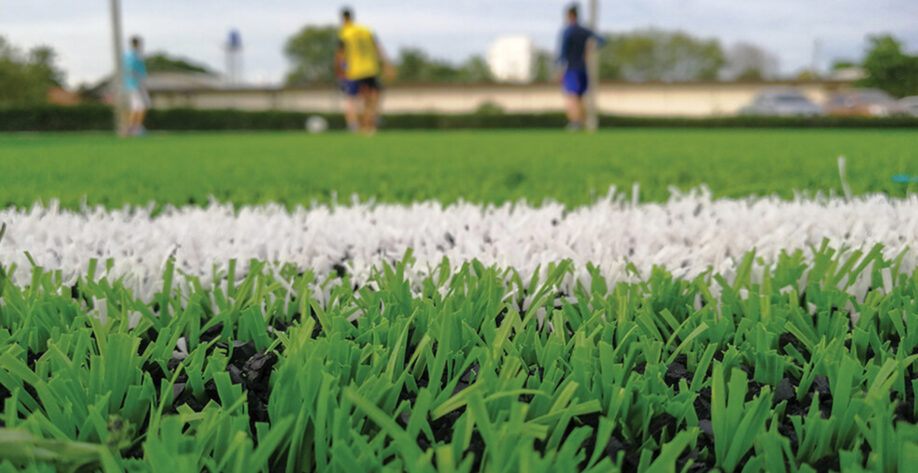Since the installation of the first synthetic-turf field in the 1970s, there have been concerns about the safety, health, and environmental impact of installing and playing on artificial surfaces. Infill was introduced to turf fields in the 1990s, and consists of crumb rubber (SBR—styrene butadiene rubber) and sand.
The sand and crumb rubber are added on top of the carpet and raked in between the fibers to provide footing and shock attenuation, and to hold the fibers upright, giving the carpet a realistic, grass-like appearance.
This basic system has been used ever since for most types and brands of synthetic athletic fields, except for some field-hockey fields, which still use knitted nylon carpet.
In the fall of 2014, NBC television broadcast a segment that proposed a link between the crumb rubber used in infilled synthetic-turf fields and an uncommon type of lymphoma that several soccer goalies had contracted. Although the link is still unsubstantiated, many owners and players have questioned the safety of using recycled rubber crumb in synthetic turf. Because of these concerns and the potential for community opposition to turf-field projects, many field owners no longer want to use the standard crumb rubber-and-sand infill, and are looking for alternatives.
Continue reading Exploring the Options: Alternative Infills for Synthetic-Turf Fields on Parks & Rec Business Magazine’s website.
Tagged In:
Athletic Facilities Planning & Design
